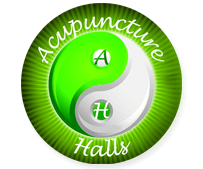
Muscle testing and postural analysis are foundational techniques in physical therapy, chiropractic care, sports science, and holistic health practices. They provide insights into the body’s neuromuscular health, biomechanical efficiency, and functional symmetry. When used together, these assessment tools offer a robust framework for diagnosing musculoskeletal imbalances, designing corrective exercise programs, and monitoring rehabilitation progress.
Introduction to Muscle Testing and Postural Analysis
Muscle testing and postural analysis are diagnostic strategies used to evaluate the structural and functional integrity of the musculoskeletal system. While muscle testing focuses on individual muscle strength and responsiveness, postural analysis evaluates how the body aligns and balances itself under the influence of gravity.
These techniques are used across various fields including:
- Physical therapy
- Chiropractic care
- Athletic training
- Occupational therapy
- Functional medicine
- Bodywork and massage therapy
Principles of Muscle Testing
Manual Muscle Testing (MMT)
Manual Muscle Testing (MMT) involves the application of resistance to a specific muscle or muscle group to determine its strength and function. It is commonly graded on a scale from 0 to 5:
| Grade | Description |
| 0 | No contraction |
| 1 | Flicker of contraction, no movement |
| 2 | Movement with gravity eliminated |
| 3 | Movement against gravity |
| 4 | Movement against some resistance |
| 5 | Normal strength against full resistance |
MMT helps identify:
- Muscle weakness or dysfunction
- Neurological impairment
- Muscle compensation patterns
- Progress or regression in rehabilitation
Applied Kinesiology
Applied Kinesiology (AK) extends beyond basic strength testing and involves muscle response testing to evaluate the effects of physical, chemical, and emotional stressors on muscle function. Practitioners believe that muscle strength can reflect internal imbalances or organ dysfunctions.
While widely used by chiropractors and integrative health professionals, AK remains controversial due to a lack of robust scientific validation.
Principles of Postural Analysis
Static vs. Dynamic Posture
Static posture refers to the body’s alignment while still (standing, sitting), while dynamic posture refers to how posture changes during movement (walking, running, lifting). Both are crucial in understanding musculoskeletal health.
Static Postural Landmarks Include:
- Ear lobe alignment with shoulder (cervical spine alignment)
- Shoulder level symmetry
- Spine curvature (lordosis, kyphosis, scoliosis)
- Pelvic tilt
- Knee and foot positioning
Common Postural Deviations
- Forward Head Posture
- Often due to prolonged screen time
- Leads to neck pain, headaches
- Rounded Shoulders
- Result of poor thoracic spine mobility
- Associated with tight pectorals and weak rhomboids
- Anterior Pelvic Tilt
- Excessive lumbar lordosis
- Tight hip flexors, weak glutes and core
- Scoliosis
- Lateral curvature of the spine
- Can be functional (muscle imbalance) or structural
- Genu Valgum/Varum (Knock-Knees/Bowlegs)
- Affects lower extremity alignment and gait mechanics
The Interplay Between Muscle Imbalances and Posture
Muscle imbalances are a primary cause of postural deviations. These imbalances may be due to:
- Repetitive motion
- Prolonged static positions
- Injury or compensation
- Neurological disorders
For example, tight hip flexors and weak glutes often cause anterior pelvic tilt. Similarly, overactive upper trapezius and underactive lower trapezius can cause scapular elevation and rounded shoulders.
Identifying and addressing these imbalances is critical for restoring functional movement and preventing injury.
Clinical Applications
Muscle testing and postural analysis are valuable in a variety of clinical settings:
- Rehabilitation: Tracking muscle strength post-injury
- Sports Performance: Optimizing biomechanical efficiency
- Ergonomic Assessment: Preventing work-related musculoskeletal disorders
- Orthopedic Diagnosis: Identifying structural abnormalities
- Pre/Post-Surgical Assessment: Planning interventions and monitoring outcomes
Tools and Techniques Used
- Plumb lines and posture grids for visual postural assessment
- Goniometers and inclinometers to measure joint angles
- Force platforms and EMG for dynamic and neuromuscular analysis
- Digital posture analysis software for objective documentation
- Functional Movement Screen (FMS) for identifying movement dysfunctions
Integrating Assessments into Treatment Plans
Steps to Integration:
- Initial Evaluation: Conduct baseline MMT and posture assessment
- Identify Dysfunction: Determine key muscle imbalances and misalignments
- Plan Intervention: Design a program targeting weakness and mobility restrictions
- Educate the Client: Teach about the importance of posture and body awareness
- Re-evaluate Regularly: Track improvements and adjust the plan accordingly
Corrective exercises may include:
- Mobility drills (foam rolling, stretching)
- Stability training (planks, core activation)
- Strengthening weak muscles (resistance training)
- Postural re-education (ergonomic training, mindfulness)
Conclusion
Muscle testing and postural analysis are powerful, non-invasive tools that provide valuable insight into the body’s functional status. Whether used in clinical rehabilitation, athletic performance, or preventive health, these assessments help practitioners detect imbalances, personalize interventions, and track recovery.
While they should not be used in isolation, when combined with other diagnostic strategies and therapeutic techniques, they offer a holistic approach to physical health and human movement.
If you want to try muscle testing, go to the Acupuncture Halls clinic in San Juan Capistrano, California. A licensed medical professional can help you with your health issues and general well-being. You can use this form or give 949-510-6333 a call to schedule an appointment.
